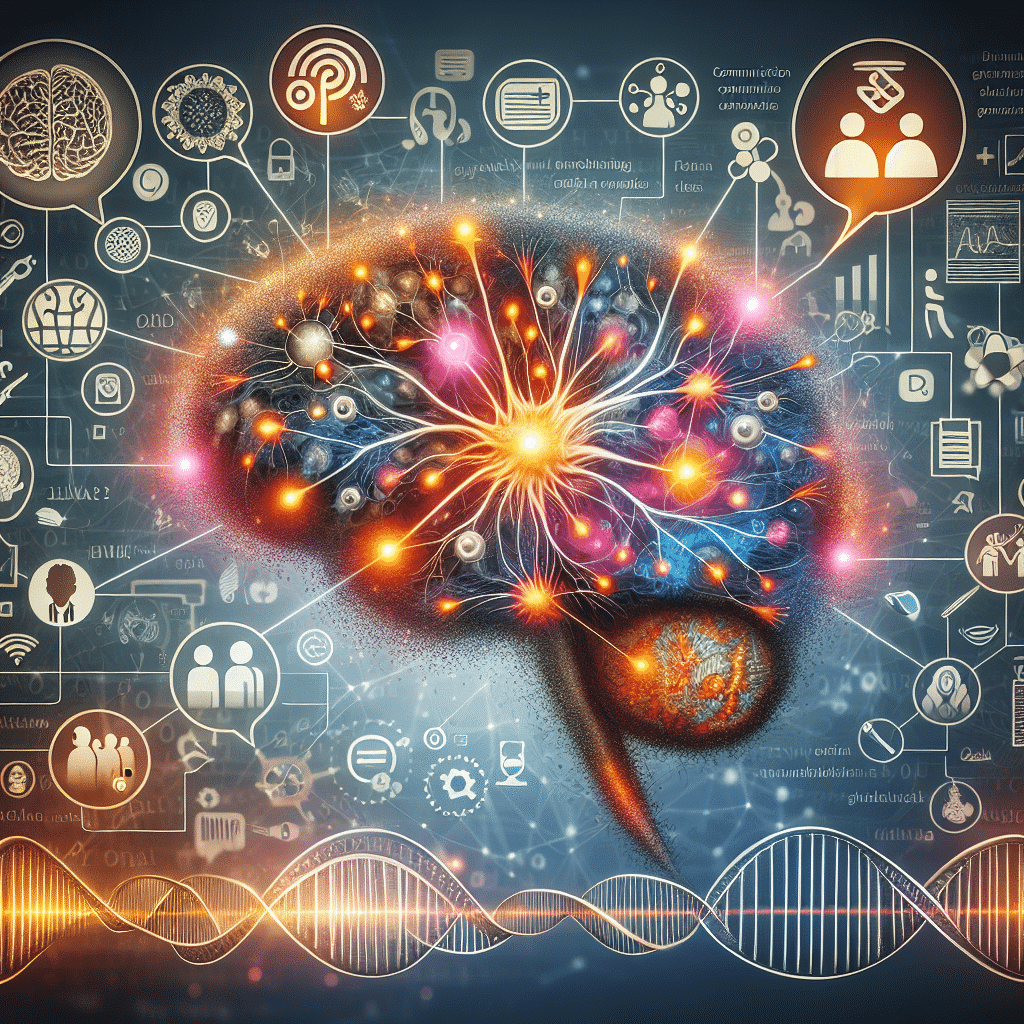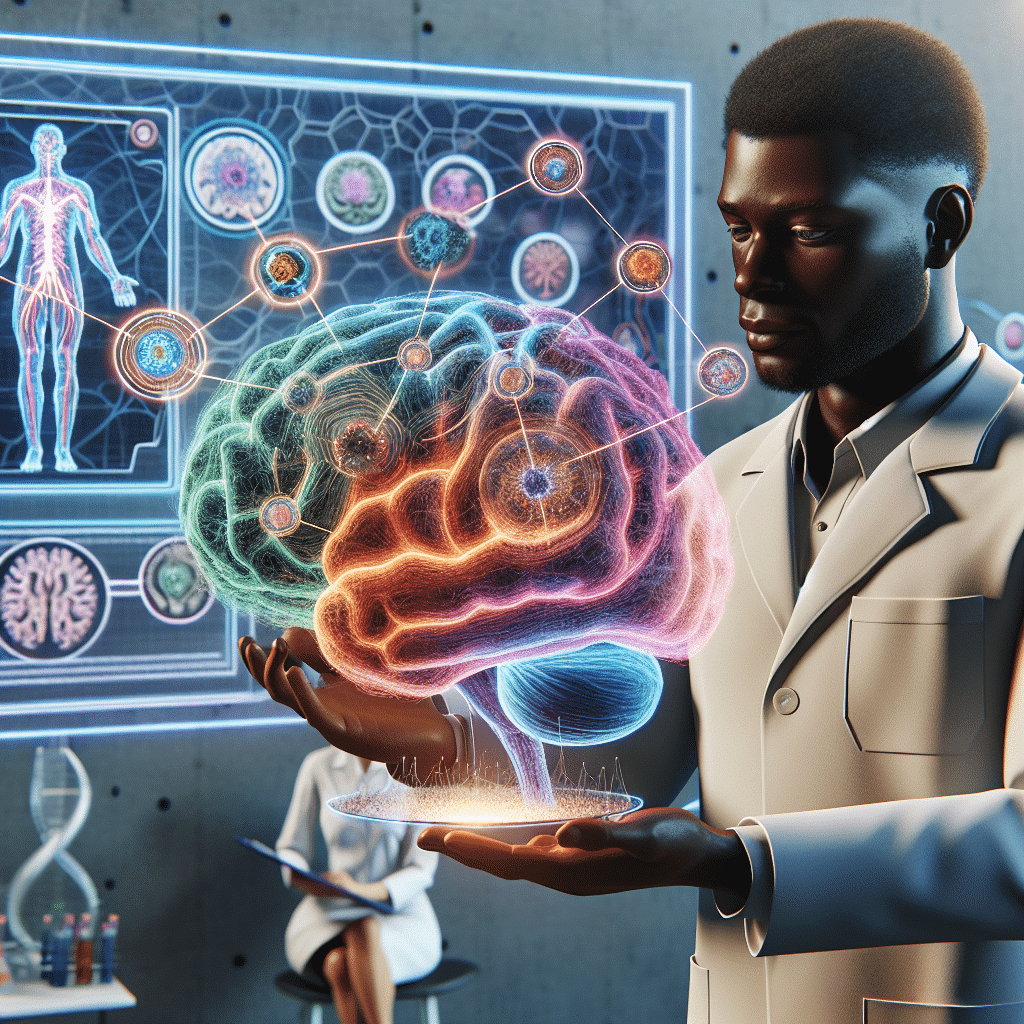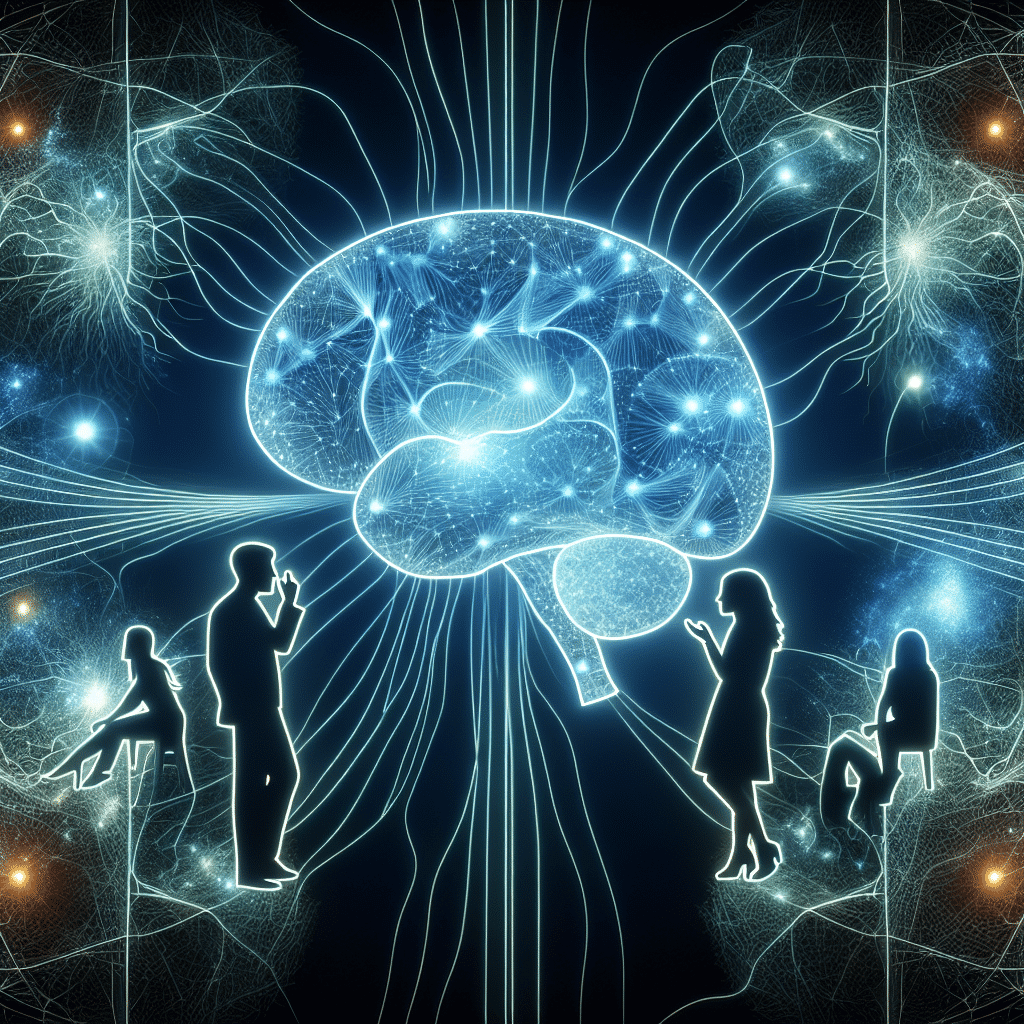
Understanding the Neurobiology of Communication
The field of neuroscience has made significant advancements in understanding how our brains function and influence our behavior, including the complex processes involved in communication. By studying the neurobiology of communication, researchers have gained valuable insights into how our brains process and transmit information, leading to a better understanding of effective communication skills.
Neuroscience investigates the neural pathways and systems responsible for communication, helping to explain why some individuals are more effective communicators than others. By examining the brain’s structure, neural connections, and chemical processes involved in communication, researchers can identify factors that contribute to successful interpersonal interactions.
The Neurobiology of Communication explores many aspects, such as how the brain processes language, interprets social cues, and regulates emotions during communication. Understanding these processes can help individuals improve their communication skills and navigate complex social interactions more effectively.
Studying the Neurobiology of Communication also reveals the impact of various factors, such as cultural background, upbringing, and individual differences, on communication style and effectiveness. This knowledge allows us to embrace diversity and adapt our communication strategies to meet the needs of different individuals and contexts.
The Role of Mirror Neurons in Effective Communication
Mirror neurons are a type of brain cell that play a crucial role in understanding the actions and intentions of others. These neurons, discovered in the 1990s, fire both when an individual performs an action and when they observe someone else performing the same action. This mirroring effect allows us to empathize with others and understand their perspectives, which is essential for effective communication.
When we communicate with others, mirror neurons in our brain help us mimic their facial expressions, gestures, and tonalities. This mirroring process enables us to better comprehend their emotions and intentions. For example, when someone smiles at us, mirror neurons in our brain fire, allowing us to understand that the person is happy and likely feeling positive towards us.
Furthermore, mirror neurons aid in the development of language skills. Studies have shown that when infants observe their caregivers speaking, mirror neurons in their brains are activated as if they were producing the speech themselves. This imitation helps infants learn language and develop communication skills at a young age.
Interestingly, individuals with autism spectrum disorder (ASD) have been found to have impairments in mirror neuron activity. This deficit contributes to their difficulties in social interactions and empathy. As a result, understanding the role of mirror neurons in communication can help in developing interventions and strategies to support individuals with ASD in improving their communicative abilities.
To enhance communication skills, it is important to focus on activities that activate mirror neuron circuits. This can include practicing active listening, observing and mimicking positive nonverbal cues, and engaging in role-playing exercises to improve empathy and perspective-taking. These activities can help strengthen the mirror neuron system and ultimately lead to more effective communication.
Overall, mirror neurons are a key component of effective communication. They allow us to understand and connect with others on a deeper level by mirroring their actions and intentions. By focusing on activating mirror neuron circuits through various exercises and interventions, individuals can enhance their communication skills and foster more meaningful connections with others.
The Role of Mirror Neurons in Effective Communication
Mirror neurons play a crucial role in effective communication. These specialized cells in the brain become activated when we observe others performing certain actions or displaying specific emotions. They enable us to empathize with others and understand their intentions, which is essential for effective communication.
When we observe someone experiencing a certain emotion, mirror neurons in our brain fire, mirroring that same emotion. This allows us to understand and resonate with the other person’s feelings. For example, if we see someone smiling, our mirror neurons activate, and we feel compelled to smile as well. This nonverbal signal communicates empathy and understanding, further enhancing the communication process.
Mirror neurons also play a role in mimicry, allowing us to imitate the actions and behaviors of those around us. By observing and mimicking others’ body language, facial expressions, and gestures, we can establish rapport and create a sense of connection. This mirroring behavior helps build trust and facilitate effective communication.
Furthermore, mirror neurons contribute to our ability to imitate and learn from others. Through observation, we can mimic the communication styles and strategies of skilled communicators, thereby improving our own abilities. This neurobiological mechanism allows us to subconsciously pick up on social cues, linguistic patterns, and communication techniques, leading to enhanced communication skills.
Understanding the role of mirror neurons can provide valuable insights for improving our communication skills. By intentionally engaging our mirror neurons, we can actively listen and empathize with others, fostering a deeper level of understanding. This can be achieved through mindful observation of body language, facial expressions, and tone of voice, enabling us to establish empathetic connections.
Additionally, we can leverage mirror neurons to enhance the effectiveness of our communication by modeling the behaviors of skilled communicators. By observing and emulating their nonverbal cues, linguistic patterns, and emotional expressions, we can improve our own communication abilities.
In conclusion, mirror neurons are essential for effective communication. They allow us to empathize with others, establish rapport, and learn from skilled communicators. By understanding and harnessing the power of mirror neurons, we can enhance our communication skills and establish meaningful connections with others.

The Power of Nonverbal Communication in the Brain
Nonverbal communication plays a significant role in the way our brains process and interpret information. While verbal communication allows us to convey our thoughts and intentions through language, nonverbal cues such as facial expressions, body language, and gestures provide additional layers of meaning that shape our understanding of communication.
Research in neuroscience has shown that nonverbal communication activates specific areas of the brain associated with social perception and empathy. When we observe or engage in nonverbal communication, these regions of the brain respond and process the visual and auditory stimuli, allowing us to understand the emotions, intentions, and attitudes of others.
One of the key regions involved in processing nonverbal communication is the amygdala, often referred to as the “emotional center” of the brain. The amygdala plays a crucial role in recognizing and responding to emotional facial expressions, such as fear, anger, or happiness. By analyzing nonverbal cues, the amygdala helps us to decipher the emotional states of others, facilitating empathy and social connection.
Facial Expressions and Emotional Significance
Facial expressions are among the most powerful forms of nonverbal communication. The human brain is wired to recognize and respond to various facial expressions, allowing us to infer the emotional states of others with remarkable accuracy.
Studies have found that certain brain areas, including the fusiform gyrus and superior temporal sulcus, are particularly involved in processing facial expressions. The fusiform gyrus helps us recognize familiar faces and interpret their emotional significance, while the superior temporal sulcus plays a role in perceiving changes in facial expressions and understanding their meaning.
Through nonverbal cues, our brains can quickly assess whether someone is happy, sad, angry, or surprised. This automatic recognition of emotions is thought to be crucial for social bonding and effective communication.
Body Language and Nonverbal Gestures
Body language and nonverbal gestures also contribute to the neuroscience of communication. The brain processes body language through the activation of the mirror neuron system, which allows us to observe and imitate the movements and postures of others.
Research suggests that when we witness someone’s body language, the mirror neuron system in our brains activates, mirroring their movements and helping us understand their intentions and emotions. This mirroring process is believed to underlie our ability to empathize and understand nonverbal cues, further enhancing our communication skills.
By understanding the power of nonverbal communication in the brain, we can become more aware of our own nonverbal cues and improve our ability to interpret and respond to others. Building our skills in reading facial expressions, body language, and nonverbal gestures can enhance our communication effectiveness, allowing us to build stronger connections and establish more meaningful relationships.
The Power of Neuroplasticity in Enhancing Communication Skills
In recent years, there has been growing interest in the field of neuroscience and its applications in various aspects of human life, including communication skills. One concept that has emerged is the power of neuroplasticity in enhancing and improving our ability to communicate effectively. Neuroplasticity refers to the brain’s ability to reorganize and form new neural connections throughout our lives.
Neuroplasticity plays a crucial role in learning and acquiring new skills, including communication skills. When we engage in specific activities and practice them regularly, our brain creates new neural pathways, allowing us to become more adept at these skills. This is particularly important when it comes to communication, as effective communication involves various processes that require coordination and synchronization of different brain regions.
Research has shown that individuals with strong communication skills tend to have more developed neural networks related to language processing, social cognition, and emotional regulation. These networks are responsible for functions such as understanding verbal and nonverbal cues, empathizing with others, and expressing emotions appropriately.
The Role of Neuroplasticity in Improving Verbal Communication
Verbal communication involves complex processes such as linguistic comprehension, vocabulary acquisition, and speech production. Through neuroplasticity, individuals can improve their verbal communication skills by engaging in activities that stimulate these processes.
For example, practicing active listening, reading aloud, and engaging in conversations can help strengthen the neural pathways associated with language processing. This, in turn, leads to better comprehension, articulation, and fluency in verbal communication.
Enhancing Nonverbal Communication through Neuroplasticity
Nonverbal communication plays a crucial role in conveying emotions, intentions, and attitudes. Facial expressions, gestures, and body language are all components of nonverbal communication that contribute to effective interpersonal connections.
By practicing mindfulness and focusing on nonverbal cues, individuals can enhance their ability to interpret and express nonverbal messages. Through neuroplasticity, the brain can develop stronger connections between the regions responsible for processing and producing nonverbal cues. This can help individuals become more attuned to these cues, improving their understanding and expression of nonverbal communication.
The Impact of Neuroplasticity on Emotional Intelligence
Emotional intelligence refers to the ability to identify, understand, and manage one’s emotions, as well as the emotions of others. It plays a vital role in effective communication, as it helps individuals navigate social interactions and build meaningful connections.
Research has shown that practicing emotional intelligence interventions can lead to changes in brain structure and function through neuroplasticity. By engaging in activities aimed at developing emotional intelligence, such as mindfulness meditation and empathy training, individuals can strengthen the neural pathways associated with emotional processing and regulation. This, in turn, enhances their ability to recognize and respond to emotional cues in both verbal and nonverbal communication.
In conclusion, neuroplasticity offers a powerful tool for enhancing communication skills. By understanding and harnessing the brain’s ability to form new neural connections, individuals can improve their verbal and nonverbal communication, as well as their emotional intelligence. Engaging in activities that stimulate these processes, such as active listening, practicing mindfulness, and developing empathy, can lead to more effective and meaningful communication.

Summary
Understanding the neurobiology of communication is crucial for improving our communication skills. By studying the neural processes involved in communication, we can gain insights into how our brains allow us to connect and understand others.
Mirror neurons play a vital role in effective communication by allowing us to mimic and understand the actions and emotions of others. This helps create rapport and empathy, leading to more successful interactions with others.
Emotional intelligence is another important factor in communication skills, as it involves understanding and managing both our own and others’ emotions. By developing emotional intelligence, we can more effectively navigate conversations and build stronger connections with others.
Nonverbal communication, such as facial expressions and body language, also has a significant impact on communication in the brain. Understanding and interpreting these nonverbal cues is essential for fully understanding the messages being conveyed.
Finally, our brains have the ability to change and rewire themselves through neuroplasticity. By actively working to enhance our communication skills, we can utilize this neuroplasticity to improve our ability to connect, understand, and communicate with others.






